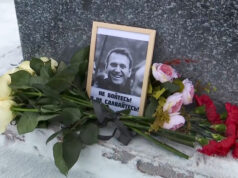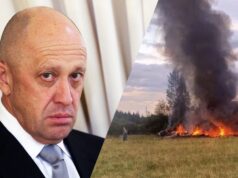In the context of Russia’s increasingly authoritarian actions at home and abroad, what do its policies of engagement in Africa indicate about its intentions on the continent and beyond?
Indeed, Moscow’s actions over the last decade have many wondering whether it has undertaken an unanticipated type of “reset” in its foreign and domestic relations. Russia continues to flex its muscle at home with crackdowns on civil liberties as President Putin actively pursues policies to regain derzhavnost, or “great power of the state.” On the global stage, the Kremlin almost invariably presents itself as a countervailing force to initiatives and actions by both the United States and the Western global powers. Is Russia hitting “rewind” and returning to policies resembling those of the Soviet Union during the Cold War?
And as Russia’s domestic policies and foreign relations with powerful Western states recall those of its predecessor, so, too, do its interactions with less-developed states. In particular, Russia is following an ambitious course of engagement in Africa, an ideological battleground during the Cold War.
In many ways, the nature of Russia’s renewed interest in Africa carries echoes of the Cold War: Russia is engaging in African countries with both soft-power and hard-power initiatives. As it did during the Soviet days, Russia is welcoming African post-secondary students into its state universities, the number of which is estimated by Russia to be roughly 10,000, with half receiving Russian funding. It has forgiven sovereign debts in Africa totaling more than $11 billion since 2005, and provides funding for educational and health-related development efforts on the continent. It is aggressively peddling military technology, and finding new ways to institutionalize the use of its military equipment by building maintenance facilities and factories on the continent.
A Resurrected Sphere of Influence?
The Kremlin seems to have hit a reset button with several states whose leadership enjoyed the fullest support of the Soviet Union as well as those that leaned toward the USSR during the Cold War. In particular, Russia’s Soviet past has been an asset in its relations with Angola, Mozambique, Namibia, and even South Africa (now governed by the ANC, the historic anti-apartheid party heavily supported by the USSR). These states’ current leaders all received direct support from the Soviet Union, including education and/or military training in the USSR, as participants in their countries’ liberation movements in the 1960s, 1970s and 1980s.
Indeed, Russia has done its best to capitalize on its Soviet legacy in these four resource-rich countries. In 2009, then-President Medvedev traveled to Namibia on the first visit to the country by any Kremlin leader, and less than twelve months later Russia and Namibia signed an agreement to develop Namibia’s vast uranium deposits, which reportedly included an investment commitment by Russia of up to $1 billion. Russia has succeeded in negotiations to sell military helicopters to Mozambique, although it has made as-yet-unsuccessful overtures to help the country develop the infrastructure necessary to exploit its substantial oil and natural gas reserves.
Russian relations with South Africa, which were reenergized with President Putin’s initial visit to South Africa in 2006, have been further buoyed by the expansion of BRIC (an economic, political, and cultural association comprised of Brazil, Russia, India, and China) to include South Africa into the newly-named BRICS in 2010. More recent bilateral visits by the states’ leaders include President Zuma’s visit to Moscow in 2010 and President Putin’s visit to the BRICS summit in Durban in March of 2013. The nature of the states’ bilateral business cooperation has unsurprisingly been in the mining, metallurgy and military-equipment sectors, with plans both to build a Johannesburg-based servicing center for Russian military and civilian helicopters, and to design a joint helicopter. Russian mining and metallurgy giants Norilsk Nickel, Evraz Group, and Renova Group are active in South Africa, and in 2011 Russia concluded a ten-year agreement with South Africa to supply uranium to its Koeber power plant.
Russia’s relationship with Angola has been by far the most tightly knit and fruitful, as might be expected given the particularly strong ties between Angola and the USSR during the Cold War. Current Angolan President Dos Santos, in office since 1979, was supported by the Soviet Union as an influential member of Angola’s Marxist-Leninist liberation movement, the Popular Movement for the Liberation of Angola, and lived in exile in the USSR, receiving his university degree in petroleum engineering from Baku, Azerbaijan in 1969. Like Namibia and South Africa, Angola is one of only eight African countries ever visited by a Russian head of state. Projects are numerous in Angola and total several billion dollars, including joint banking endeavors, a satellite communication and broadcasting system, and military and metallurgy/mining projects.
Moscow also has sought to invest heavily in North Africa, an area of apparent strategic priority, given that four of the remaining states visited by Putin or Medvedev are Libya, Egypt, Morocco and Algeria (with Nigeria being the eighth). While the landscape for Russian engagement in Libya and Egypt will have changed since the Arab Spring, and some deals with these countries’ deposed leaders will have waned, including arms deals to Gaddafi and RosAtom’s bid to Mubarak in 2009 to build a nuclear reactor at half-price, Russia nevertheless is intent on continuing engagement in North Africa, a resource-rich area tantalizingly close to Europe’s energy markets.
Back to the USSR?
But although the Kremlin’s foreign-policy actions in Africa may resemble those of the Soviet Union during the Cold War, its ambitions on the continent are quite distinct from ideologically motivated Soviet concerns. While Russia is indeed striving to regain its status as a top global power, its battle for Africa today is less about ideology and more about vying with China and other contenders for control over the continent’s vast energy resources and mineral wealth (and perhaps lining the pockets of its political and economic elites in the process).
Russian engagement in Africa aims to boost its current and future power through three core economic objectives: control over energy supplies, primacy in mining and metallurgy, and the sale of its military technology.
First, the notion of retaining its position as a leading energy supplier to Europe figures prominently in Russia’s engagement in Africa: if Russia can conclude enough deals on the continent to effectively mitigate the threat of a future competitor in European energy supply, it will retain its influence over European energy security.
While the Kremlin thus far remains unsuccessful in inking oil and gas deals with Mozambique, Russia has succeeded in establishing itself as a major partner with Angola, currently Africa’s #2 oil producer. Russia’s #2 oil producer, Lukoil, is active in Africa, and Russian energy giant Gazprom has negotiated with Nigeria for possible inclusion in operating the trans-Saharan pipeline from Nigeria to Algeria.
Russia has likewise made inroads into the delivery of nuclear energy: in late November, RosAtom, the state-owned nuclear agency, hosted a “nuclear suppliers’ forum” in Johannesburg and subsequently issued reports saying it is close to finalizing a deal to build three nuclear power plants in South Africa. Additionally, Russia appears to be bolstering its nuclear-industry reserves through cooperative agreements in Africa: Russian state uranium company Atomredmetzoloto won a bid to build Tanzania’s first uranium mine earlier this year.
The Kremlin is also vying for market share in Africa’s non-ferrous mining sector, in part to boost its own domestic industry. Russia has strategic deficits in some resources critical to its metallurgical and manufacturing sectors, including manganese, chrome, mercury, titanium, and bauxite, all of which are available in Africa. Russian business giants Rusal, Norilsk Nickel, Rusal Boksit, Russkiy Aluminsky, and Renova are active on the continent in mining aluminum, bauxite, manganese, and other resources.
Russian diamond-mining company ALROSA is active in South Africa, Sierra Leone, Namibia, and Angola (where it reportedly controls 60% of all extracted diamonds). Russia’s particular interest in the extractive sector is evidenced by the chairmanship of the Russian-South Africa Joint Intergovernmental Committee on Trade and Economic Cooperation (ITEC) by Sergei Donskoi, Russia’s Minister of Natural Resources and Ecology.
Russia, of course, also seeks to maintain an African market for its military equipment and weaponry. In many ways, Russian technology and arms are an easy sell on the continent: another Soviet legacy is the familiarity of many African countries’ militaries and police agencies with Russian equipment, thanks to the USSR’s Cold War supply and training programs.
As previously mentioned, Russia has recently succeeded in selling a good number of its military and civilian helicopters on the continent, and has concluded deals to build two maintenance facilities, one each in South Africa and Angola. The Angolan deal was part of a rather puzzling purchase order totaling $1 billion for Russian transport helicopters, tanks, artillery, firearms and ammunition, as well as eighteen Su-30K fighter jets previously owned by India and idling in a warehouse in Belarus since 2007.
Some experts suggest that the fighter jets appear completely superfluous to the Angolan military, not only because Angola does not appear to be meeting any threats by its neighbors that would warrant such equipment in such numbers, but also due to the lack of sufficiently-trained Angolan military aviators to pilot the jets. They would, however, bolster the perceived power of Angolan President Dos Santos, who has recently faced some public protests led by the rival UNITA party.
In sum, while Russia’s ambitions in Africa may be predicated on Cold War-era relationships, it is not seeking an ideological victory, but rather economic gains, ranging from increasing its position as a global energy superpower with hegemony over Europe to bolstering its own metallurgy and industrial sector with Africa’s vast natural resources to maintaining a market for its military-industrial goods. In today’s world, power over resources and markets increasingly equates with true future hegemony.
Of note is that this shift has not gone unnoticed by the leaders of African states courted by Russia: they are likewise operating within the new paradigm of economic ambitions trumping ideological ones. And these states are comfortable courting a number of foreign suitors, including China, Brazil, Germany, India, and Spain. This shift may, however, have gone unnoticed in the United States thus far.
Karen Saunders is a Fellow at the Forum Foundation for Analytic Excellence, where she specializes in analyzing terrorism, corruption, and transnational crime, particularly involving actors from the Soviet successor states, Africa, and Latin America.





